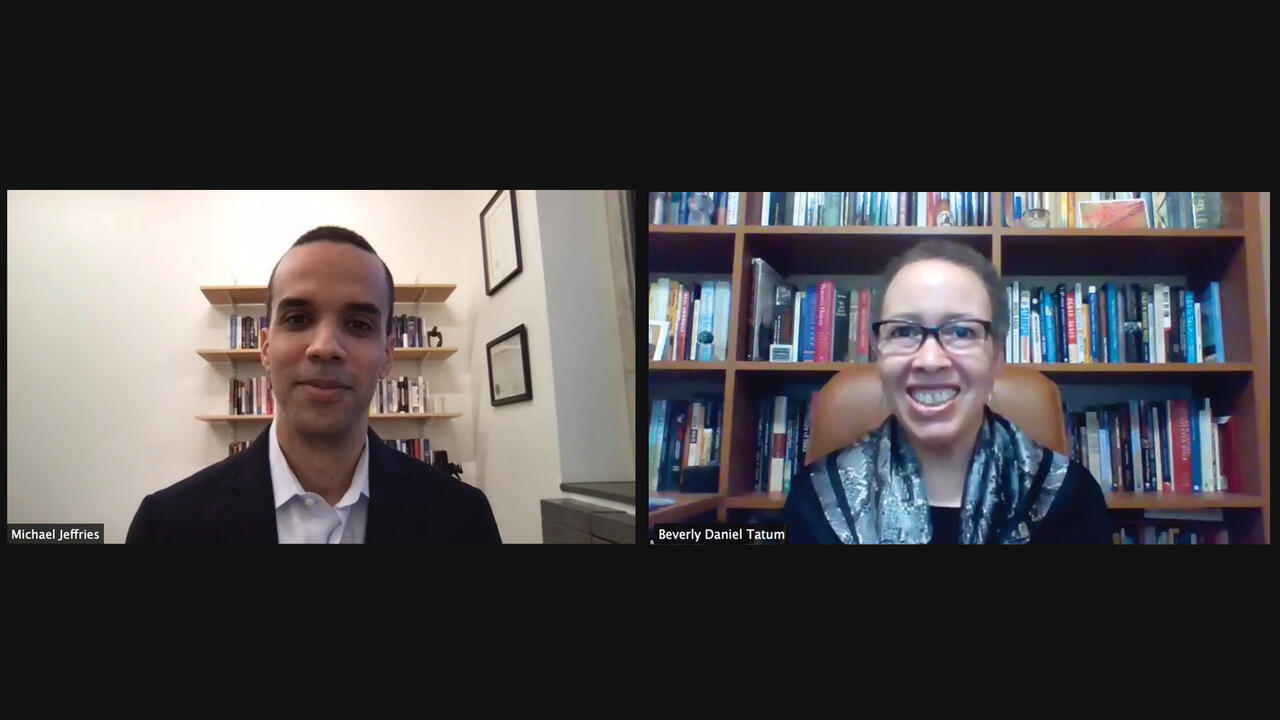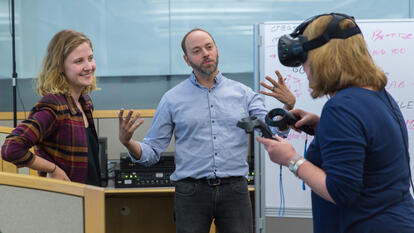
Author and Former Spelman College President Beverly Tatum Discusses Race, Identity, Higher Education, and More
As part of the Betsy Wood Knapp ’64 Lecture Series, Beverly Tatum, best-selling author and president emerita of Spelman College, joined Michael Jeffries, dean of academic affairs and professor of American studies at Wellesley, for a wide-ranging conversation about U.S. race relations, identity development, the impact of the pandemic, and more.
“I’m a long-term admirer of Dr. Tatum’s work,” President President Paula Johnson said in her introduction. “Like many, I first encountered her ideas through her groundbreaking and best-selling book, “Why Are All the Black Kids Sitting Together in the Cafeteria?” And Other Conversations About Race. I read it soon after it was published in 1997, and still recall its impact, how it put my own college experience into a larger context. It helped me understand the path that my own children would travel.”
Jeffries said that for scholars of race, “it’s difficult, really, to overstate” the impact of the book, which addressed the importance of candid conversations about racial identity to improve communication across racial divides. “I thought it was really important to bring this body of information about racial or ethnic identity development into the space where educators could use it,” Tatum said.
When people ask what the book is about, she said, she tells them it has three parts: what, so what, and now what. The “what” is racism. How do we understand it as a system of advantage based on race? Most people think of racism as individual behavior—and it can be that—“but your behavior, your attitudes could be perfectly fine and you can still be participating in a racist system, benefiting from it, perpetuating it,” she said.
“As you know more of that history, it is easier to build alliances because you see the shared experience, maybe in ways that you didn’t before.”
Beverly Tatum
Next, she asks, so what difference does it make that we live in a society structured this way? How does it make individuals feel? How does it affect our interactions? Lastly, she asks, now what can I do about it? “Those are three questions you want to be able to answer,” she said. “You want to be able to understand and talk about and recognize the structural racism around you, and you want to appreciate that it matters.”
Jeffries asked Tatum how structural racism has intersected with the pandemic. She said that in Georgia, where she lives, the Black and Latinx populations have been affected the most by COVID-19, both in terms of illness and death. “People are living in situations where they can’t quarantine so easily. They are doing the work that is essential, but means they’re constantly exposed to other people,” she said, and they are often not paid a living wage. She talked about the differential access to resources, from being able to drive to any location to get a COVID-19 vaccine to the technology limitations kids may face while trying to complete schoolwork from home, or the stress of housing insecurity after a job loss. “The safety net that we think exists for other people, just has a giant hole in it,” she said.
“What are the opportunities that you see in realizing some cross-racial solidarity, some cross-ethnic solidarity, and a commitment to a linked fate where we share responsibilities, sacrifices, and ambitions?” Jeffries asked. “Education is really critical,” she replied. Early in her career, she said, she taught a course about group exploration of racism that focused on the Black/white binary, because that was what she knew and her scholarship was rooted in the African American experience. “But then I had students in my class who were not Black or white,” she said, such as Latinx and Asian students. “Inevitably they said to me, as the instructor, ‘Where am I in this picture? Where do I fit in this narrative?’”
So she started educating herself about the variety of experiences her students brought to class. “As I learned more, I incorporated more of that knowledge into my classes, so that all of my students could see where they fit into this fabric of systemic racism, structural racism in our society,” she said. Students started seeing similarities between their lived realities, too. “As you know more of that history, it is easier to build alliances because you see the shared experience, maybe in ways that you didn’t before,” she said. “If it were up to me, if I could wave my magic wand, I would really work to introduce students to each other’s histories, because that really helps build that sense of not only shared destiny, but shared path.”
A recording of the conversation will soon be available to the Wellesley community.



